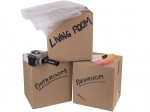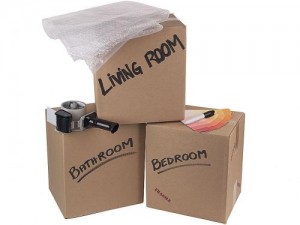Adjustable Rate Mortgages: The Pros and Cons

Adjustable rate mortgages are loans with variable interest rates that change according to the market rates, as opposed to fixed rate mortgages, which guarantee a set rate for the entire period of the loan. ARMs may seem like a great idea some years, but in other years, you may wonder what you were thinking when you agreed to the loan.
Many financial experts advise home buyers to seek fixed rate mortgages. The set interest amount makes it easier to calculate monthly payments with no surprises. An adjustable rate mortgage can leave you with unpleasant surprises if the interest rates suddenly soar.
There are some pluses as well as minuses to adjustable rate mortgages. As with any financial decision, learn all you can about the topic and weigh the pros and cons carefully before choosing a loan type.
On the Plus Side…
ARMs may be good for buyers who plan to sell in a few years. If you know your job requires you to move every five years, an ARM may be worth the risk of interest rates rising, depending on the current rate.
Paying off your loan in a short time period may make an ARM better for some homeowners. For those who know they can repay the entire mortgage amount quickly but just need a short-term loan, ARMs may actually save them money.
Some ARMs offer a combination of adjustable and fixed rates. These may offer the best of both worlds, depending on market rates. For example, a mortgage may be fixed for five years, and then adjust annually.
On the Minus Side …
Interest rates may be low now, but that only means they’ll rise later. When interest rates rise, your interest rate rises too. Your monthly payments will increase. This may be a hardship for some people.
Adjustable rate mortgages may be saddled with a prepayment penalty. This means that if you suddenly come into a windfall and wish to pay your entire mortgage loan, you may actually be penalized for paying it off early.
ARMs can be difficult to understand. There are many variables, and you have to carefully read all the fine print to understand the nuances of a particular ARM. Fixed rate mortgages are a lot easier to understand: borrow this, pay that; it never changes.
Adjustable rate mortgages come in and out of fashion, but the truth is that you shouldn’t take out such a loan unless you understand the worst-case scenario and how it may impact your financial health. While they are not for everyone,
ARMs do offer some advantages, and those who can take advantage of these opportunities may find them useful. Talk to your lender about all the ramifications of an adjustable rate mortgage compared with a fixed rate mortgage.






 Moving into a new house is exciting, but the list of “to dos” can be overwhelming. You not only have to pack and prep the new house, but you have to tie up all the loose ends at the old place. Here are 10 tasks that are easily overlooked when moving into a new home – if you take care of these, you’ll have a leg up on moving day.
Moving into a new house is exciting, but the list of “to dos” can be overwhelming. You not only have to pack and prep the new house, but you have to tie up all the loose ends at the old place. Here are 10 tasks that are easily overlooked when moving into a new home – if you take care of these, you’ll have a leg up on moving day.
 Kim N. Bregman
Kim N. Bregman